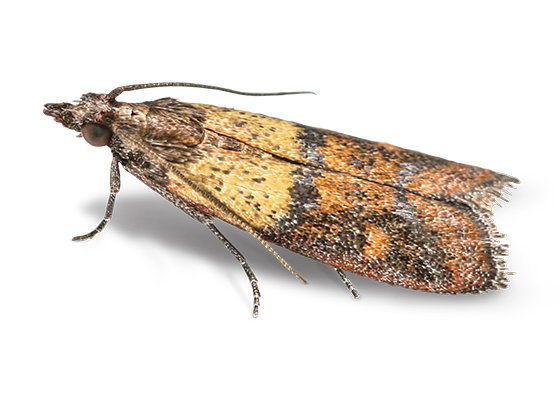SIZE: Cloth moth can grow up to three eighths of an inch long.
DESCRIPTION: Cloth moth larvae are a white color and a full grown adult is a cream color with a little bit of red hair on the top of their head.
BEHAVIOR: Cloth moths are known to be fabric pests which enjoy feasting on fabrics. These pests are not dangerous however they can cause damage to your closets or business. These moths can appear in grocery stores, pet stores, clothing stores and can cause irreparable damage to your inventory. These moths digest fabrics, animal hairs, natural fibers such as wool and cashmere. Cloth moth usually rest during the day preferring darker areas to hide and rest and usually come out in the evening times around 8PM to 11PM to look for mating opportunities.

Female cloth moths lay their eggs in clusters of between 50 to a 200. Their eggs will hatch within a week and immediately the larvae will start feeding due to the fact that the mothers lay their eggs on a food sources such as your favorite sweater. It takes 6 to 7 months for the moth to be a fully grown adult, once they emerge from their cocoon they will not feed rather they will go out in search for a mate. Once a male moth detects female pheromones it will begin a dance by fluttering its wings, this dance can last for up to 10 minutes. Xterminate’s professionals uses female pheromones to capture these moths and ensure that they don’t mate and cause an infestation.
HABITATS: Cloth moths like to rest in the morning in dark shaded areas such as basements, closets and attics and they will come out in the evening times to breed or feed. These moths can mainly be found in areas where there is clothing such as storage areas or closets.
TIPS FOR CONTROL